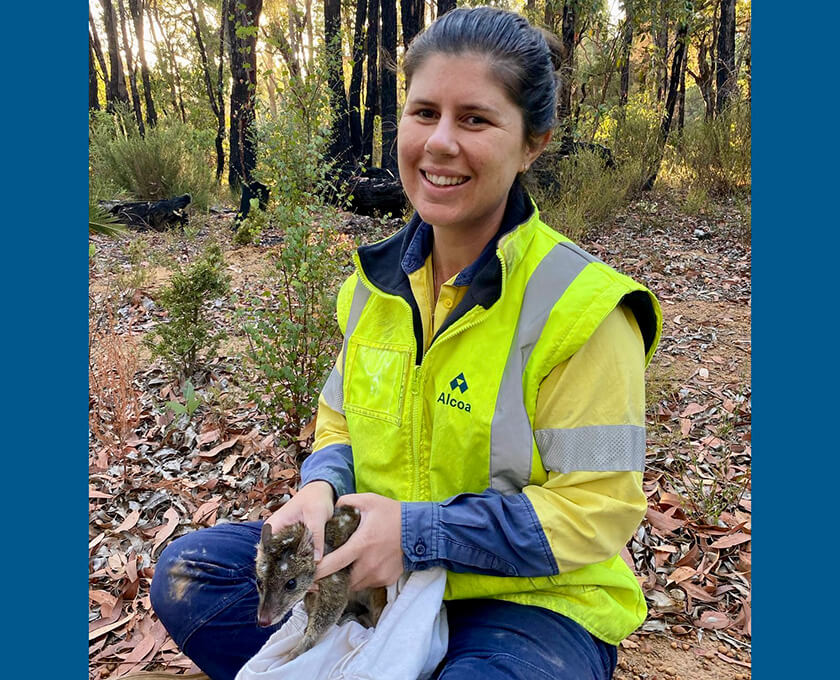June 17, 2025
Research builds on forest fauna knowledge

New insights into the habits and habitats of native Australian wildlife are emerging through Alcoa’s Forest Research Centre. The fauna studies are among more than 40 projects, either underway or planned to commence this year, supported by our $15 million investment towards research.
The studies aim to build a better understanding of the ways native animals move through rehabilitated or unmined forests, active mining areas, roads and tracks.
One project currently tracking the movements of the Chuditch, also known as the Western Quoll, is offering new insights into how this native species adapts to life in and around mining areas.
By monitoring fauna across different habitats, researchers are learning more about their patterns of movement, hunting behaviours and habitat preferences.
Motion-activated cameras are also capturing new data on mainland quokkas, including sightings in stream zones across post-mining landscapes, some in areas where they hadn’t previously been recorded.
Alcoa Research Manager Dr Lucy Commander said Alcoa’s mosaic approach to mining, combining operational zones with unmined forest and areas at different stages of rehabilitation, creates valuable opportunities for learning.
“Each part of the landscape offers something different,” she said. “By observing how wildlife responds to those changes, we can make better decisions about how we protect and connect habitats over time.”
The Forest Research Centre works in close partnership with universities, independent researchers and a technical advisory committee that includes respected environmental scientists such as former Environmental Protection Authority Chair Dr Tom Hatton, alongside Alcoa’s own biodiversity experts.
Fauna specialist Dr Justine Barker said emerging technologies are helping researchers cover more ground than ever before.
“We can now track animal movements more accurately and across much larger areas,” she said. “That means we’re better equipped to understand how to support native species and manage threats such as feral animals.”
Alongside some 20 projects already underway across the Forest Research Centre’s key pillars of fauna, flora and rehabilitation, more than 20 additional projects are planned to commence this year, including research within the water stewardship and Traditional Owner two-way science pillars.
Learn more about our Forest Research Centre on our website.
View other articles in this edition.